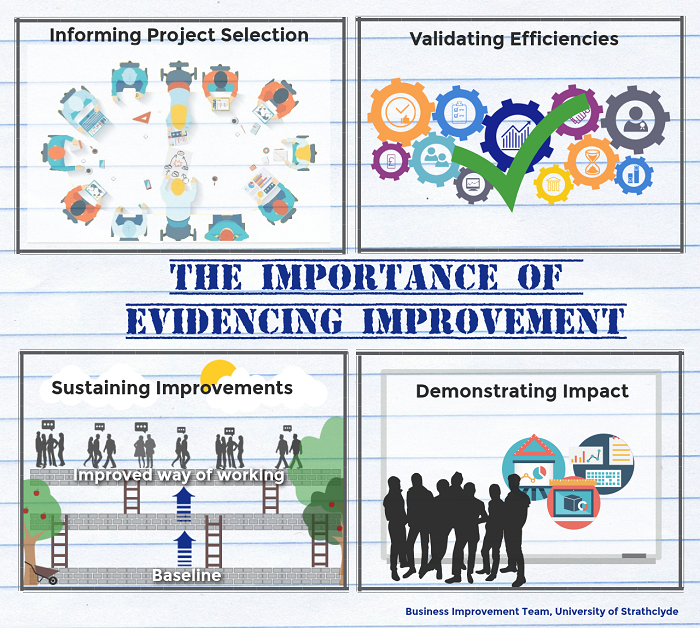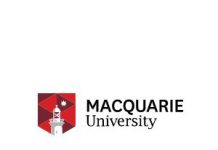How do you evidence the benefits of work you have done to improve processes in your institution? The University of Strathclyde has developed a guide and training on evidencing benefits and business improvement manager Nicola Cairns shares some of that expertise in this post.
We are all being challenged to look for ways of working more efficiently, to offer enhanced services with existing resources, to make improvements and then to sustain them. In response to this we reflect on the work of our department or team and we implement changes. But how do we prioritise the changes that are to be implemented? How do we even know those changes are improvements? Are the changes sustainable and how is this going to be achieved? And how do we demonstrate the overall impact of this work?
Evidencing the improvements can really help answer all of these questions.

Informing project selection and prioritisation
Change or improvement initiatives can be more effectively appraised when the anticipated benefits are considered up front – what will the impact be and how is this going to be measured?
Initiatives can then be selected and prioritised based on the expected quantifiable improvements and how well the improvements align with the strategic goals of the department or institution.
Being able to evidence the efficiencies gained from change initiatives has never been more critical
Lessons can also be learned for future initiatives by evaluating the benefits anticipated at the start against the benefits that are fully realised after the changes have been implemented. Did the initiative deliver as expected? Is this type of activity helping to achieve the strategic goals? Should we invest further in similar activities?
Validating the efficiencies and benefits achieved
Measuring the quantifiable benefits of change initiatives is the most powerful way of demonstrating that change has actually resulted in improvement. HEFCE announced in August this year that Value for Money (VFM) reports will be mandatory as part of an institution’s annual accountability return, effective from December 2016.
Being able to evidence the efficiencies gained from change initiatives has never been more critical. Value for Money can be demonstrated by efficiencies such as cost, time, space or energy savings as well as other benefits like improved quality of service or increased revenue. But these benefits need to be validated, and this can only be achieved by planning measurements and collecting data before and after the changes have been implemented.
Sustaining improvements going forward
Evidencing benefits when changes are first implemented is only one part of the improvement process. New ways of working can often take time to embed, so making sure the improvements are sustained in the months ahead is also important. Developing performance measures or targets can inform you of any challenges with the new way of working that may need further investigation and helps ensure the momentum is maintained. This ongoing measurement gives you confidence that the changes offer more than brief success and will deliver improvements beyond the short term.
Driving cultural change in how we demonstrate the impact of our work
Focusing on evidencing improvement from the start of an initiative through to sustainment helps build an understanding of the importance of demonstrating the impact of change. When individuals can see that quantifiable benefits have been realised from their hard work, it motivates them to consider if there are further opportunities for improvement, and to question if this success could be replicated in other areas. This creates a culture where individuals feel empowered by the knowledge that they made a positive difference, because they can see the evidence. Then evidencing improvement becomes a core element of their work.
Evidencing improvement is an essential part of each change initiative that the Business Improvement Team at the University of Strathclyde support. Using this approach the team have collectively demonstrated £330,000 of recurring annual savings, created more than 26,500 hours of staff capacity, reduced administrative processing time by an average of 58% and contributed to £4.7m of increased income. We think quantifiable benefits like these demonstrate that evidencing improvement is worthwhile, what do you think?
- Lean: seeking a shiny new process – before you leap into process improvement you need to analyse the process itself
- Making lean an integral part of existing change agendas – why finding aan approach that fits your institution’s priorities is key
If you would like to find out more about the methodology take a look at our guide, or ask us about our Evidencing Benefits training which is designed to give participants the tools to report the impact of their change initiatives and embed a culture of evidencing improvement in their area.
This post is part of a series brought to you in partnership with the Lean HE hub.








